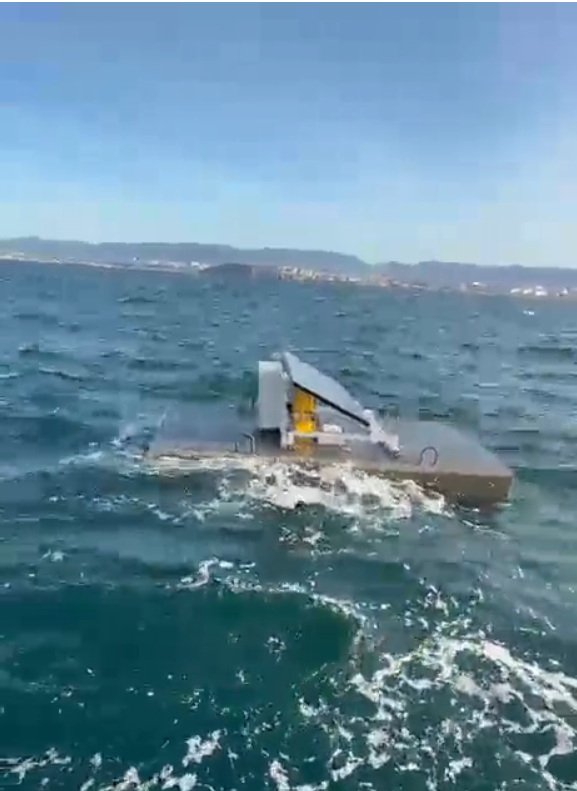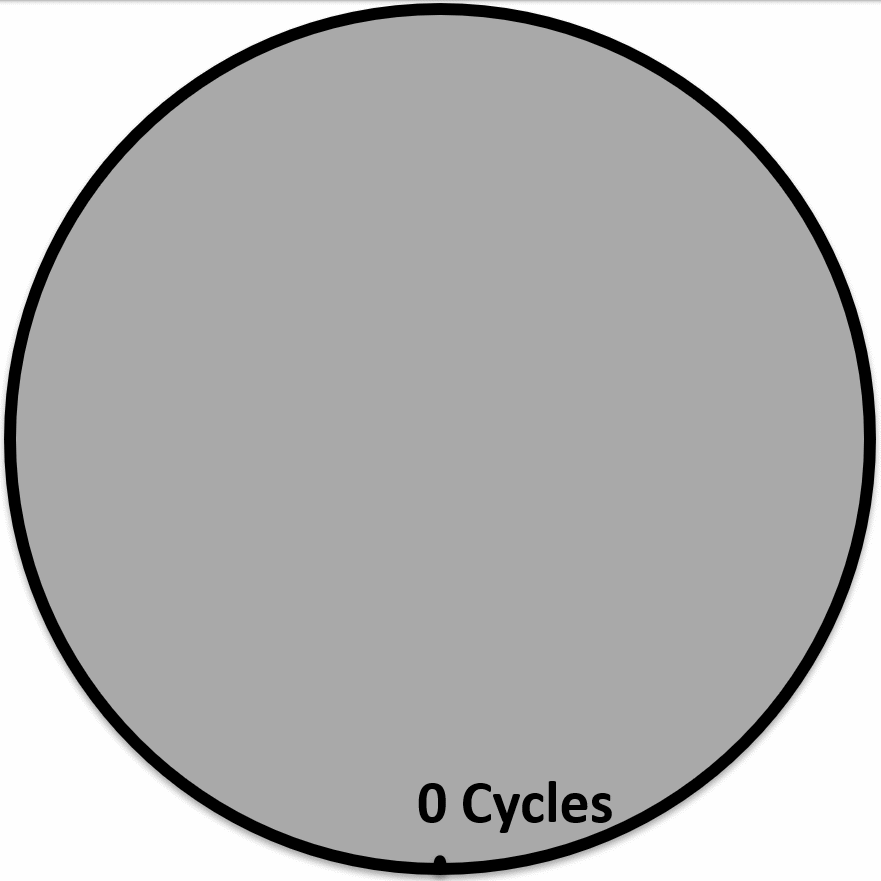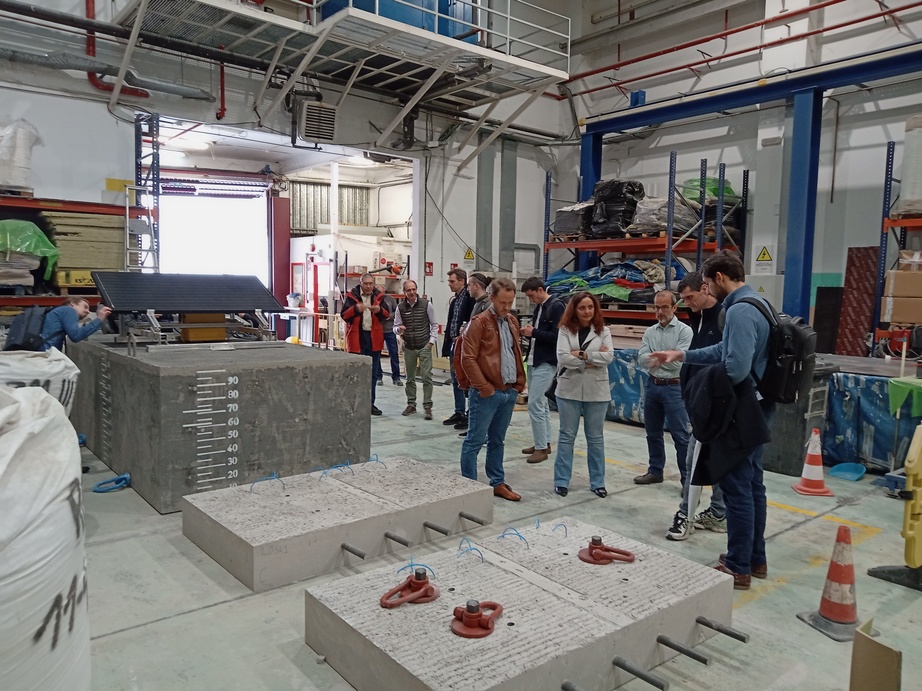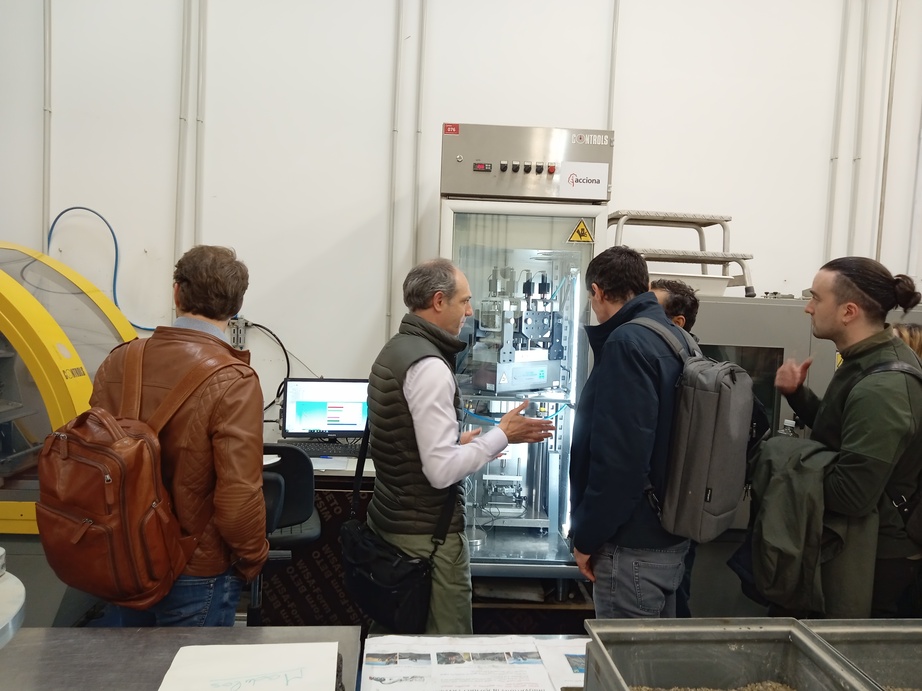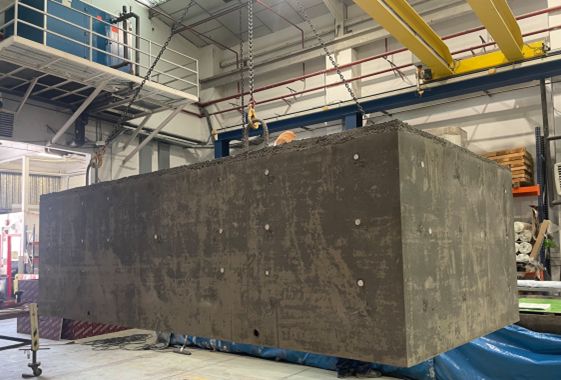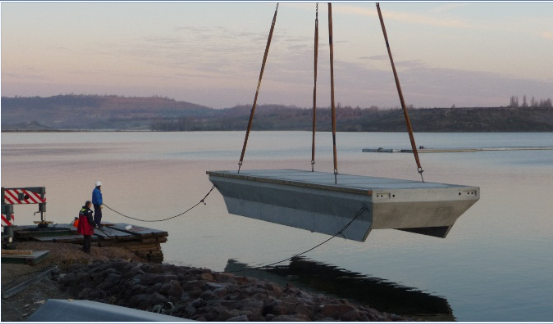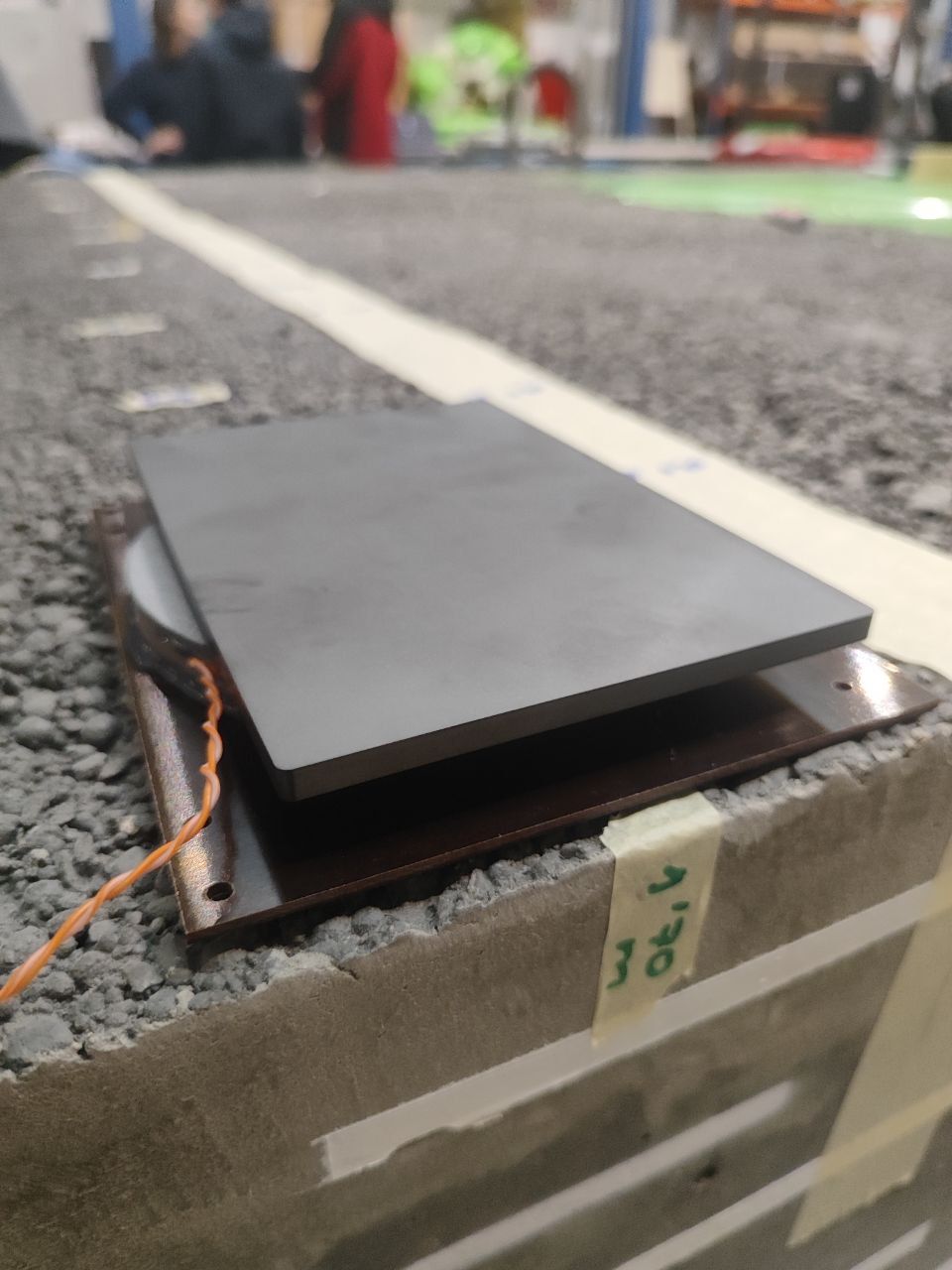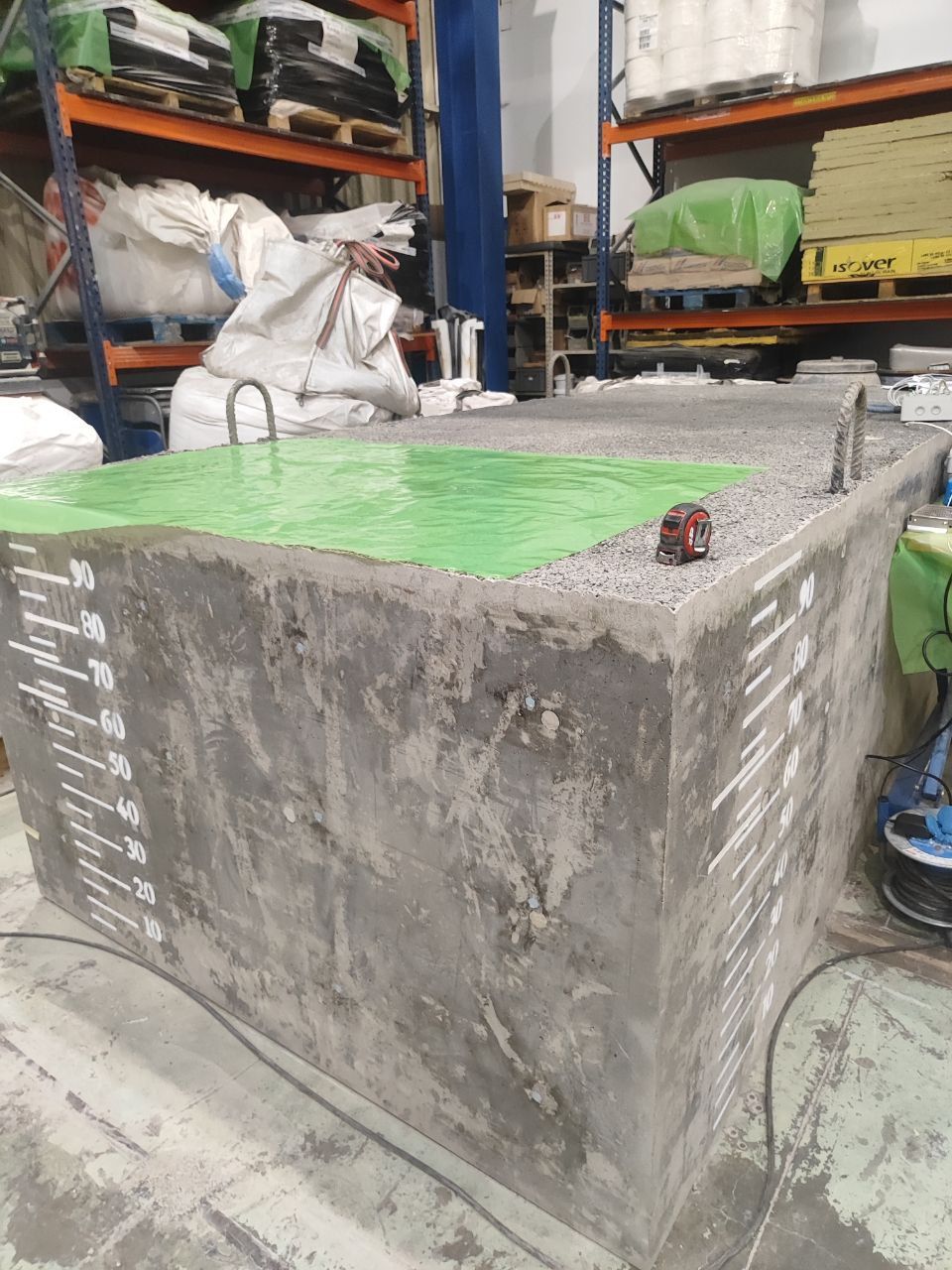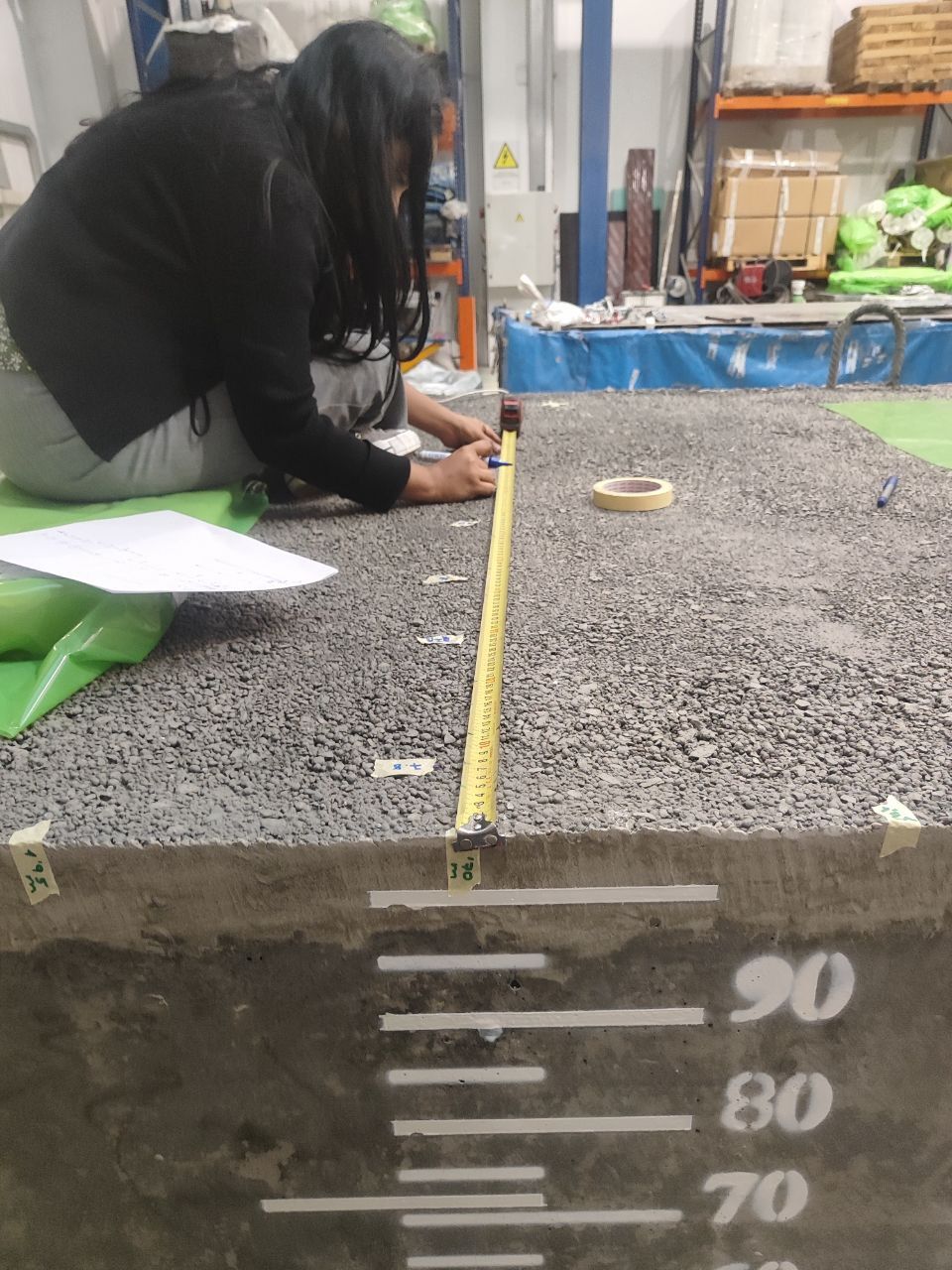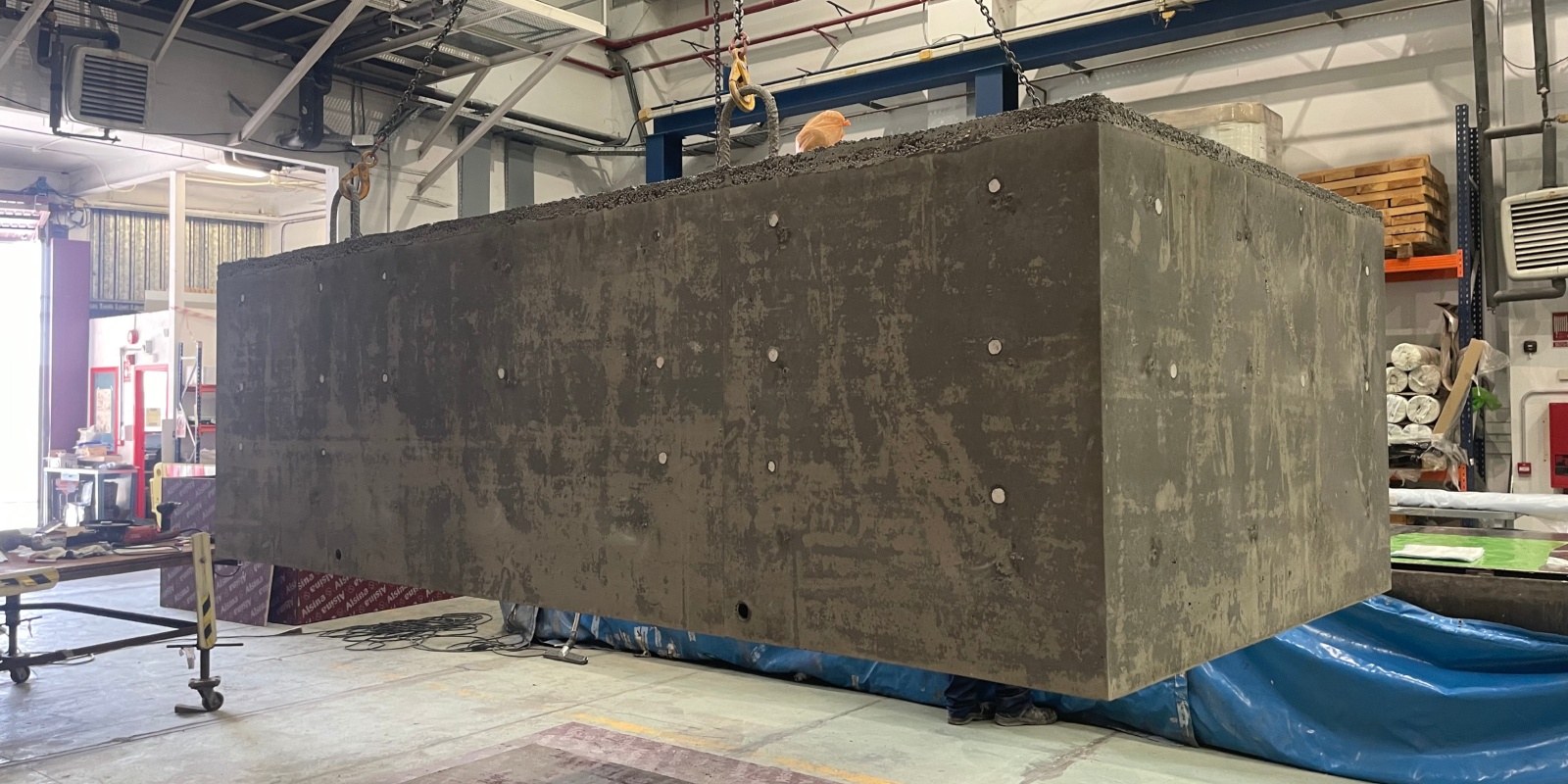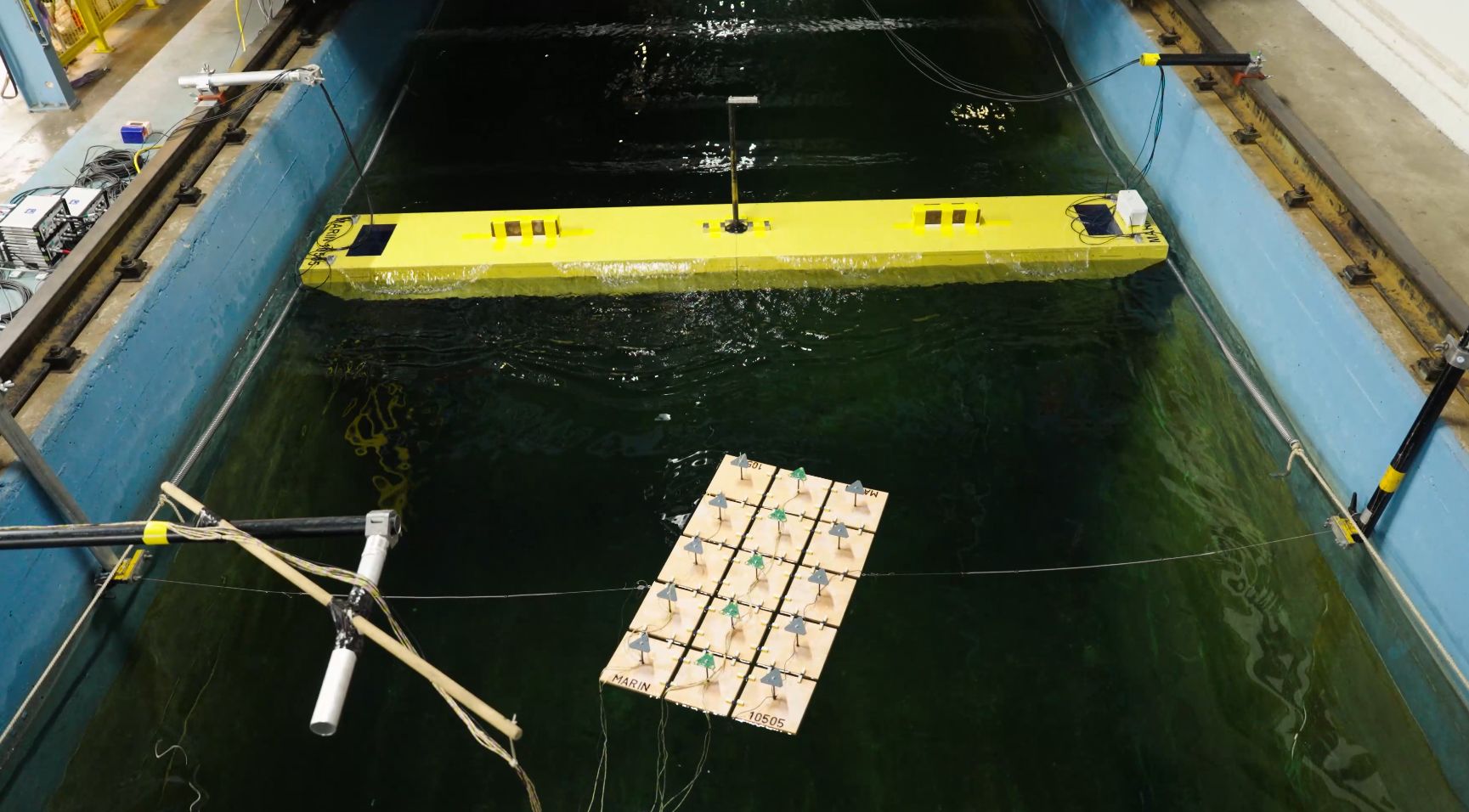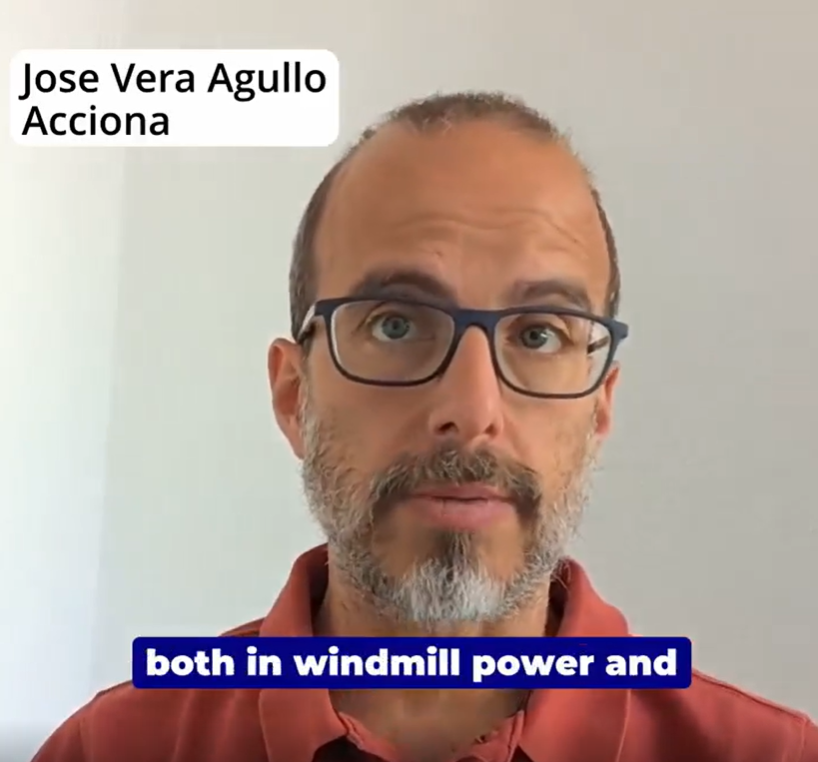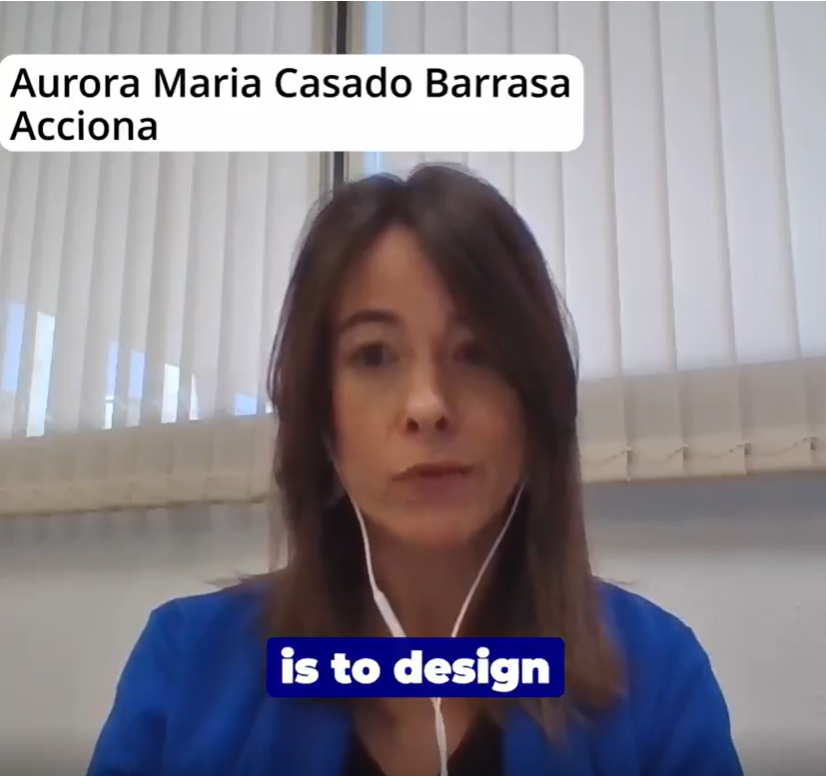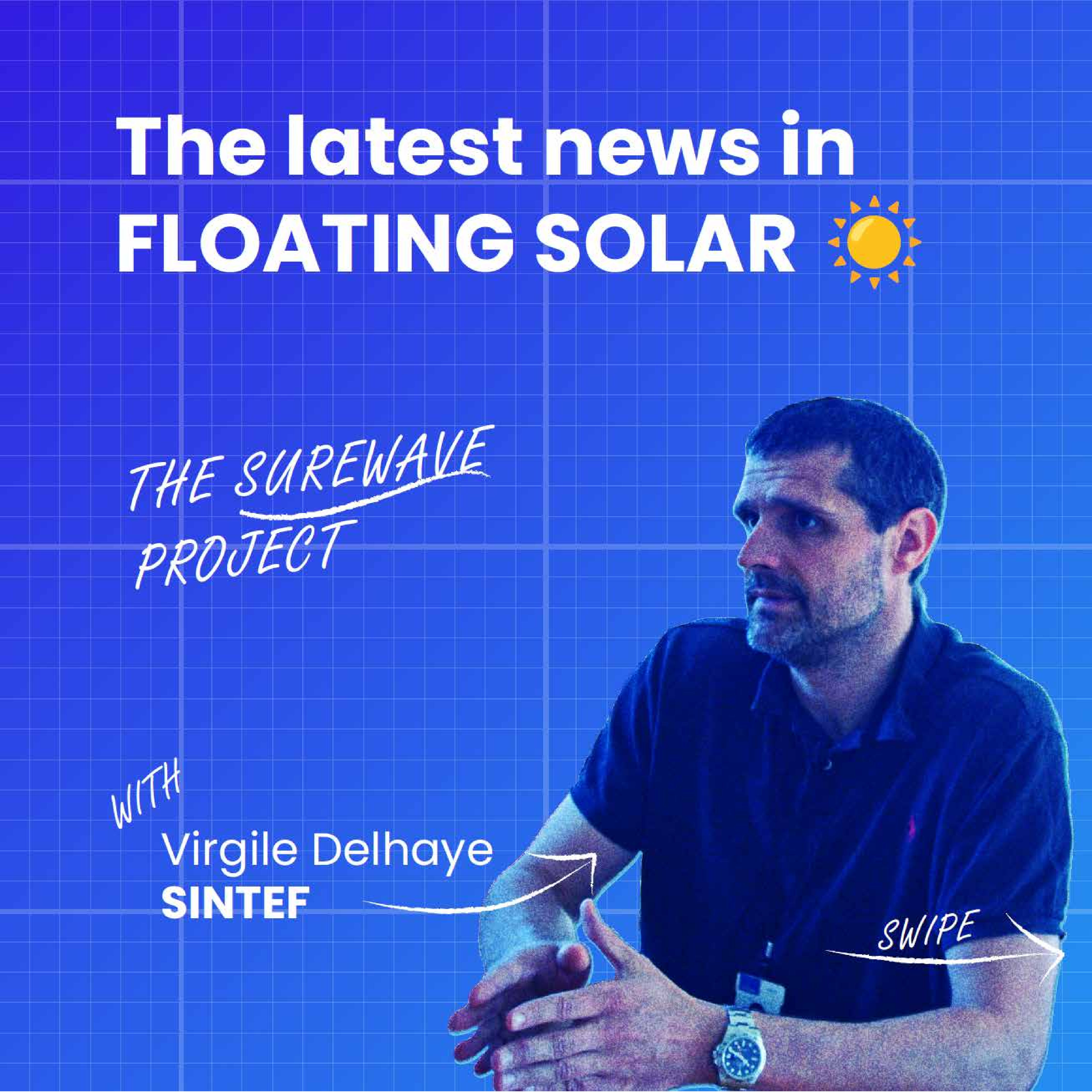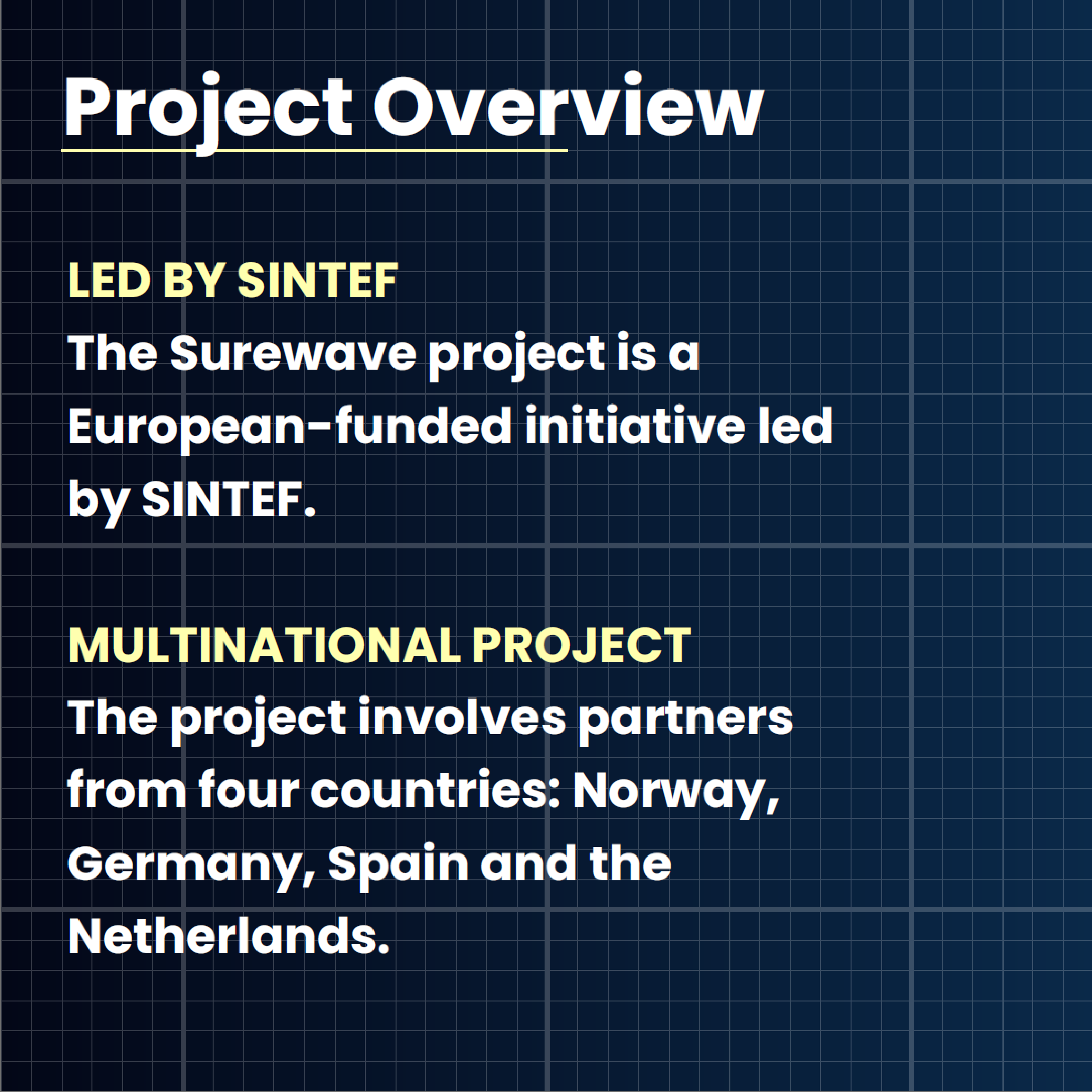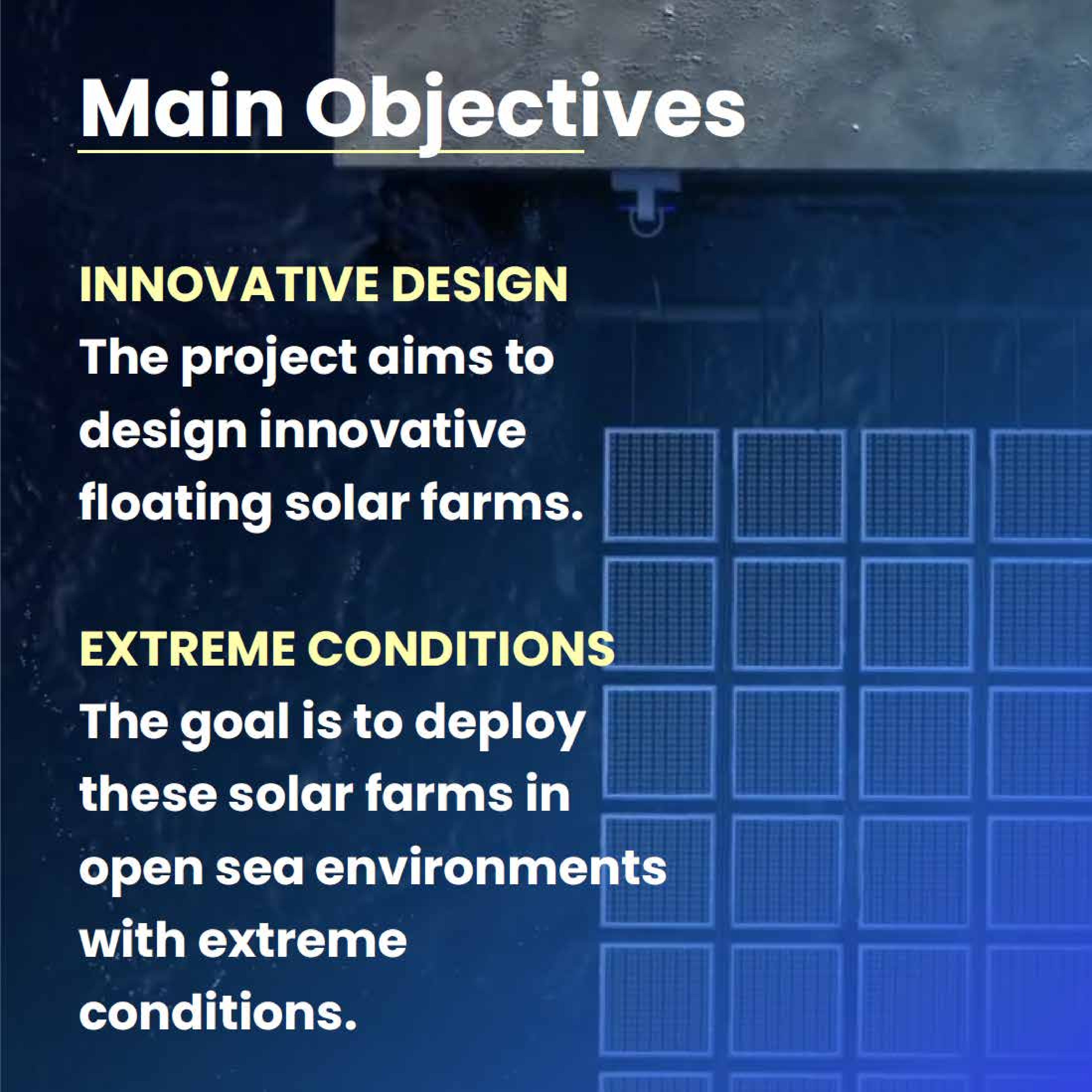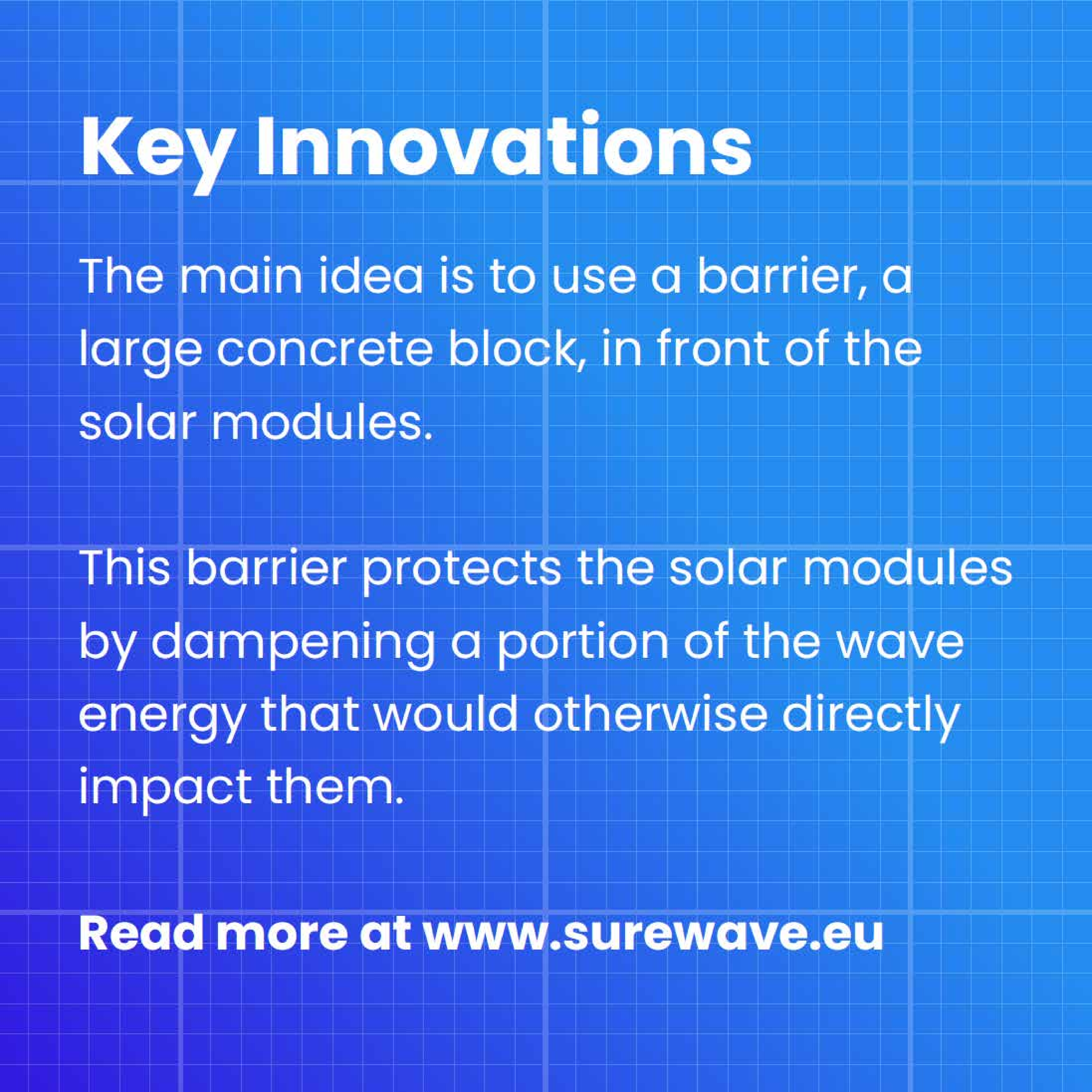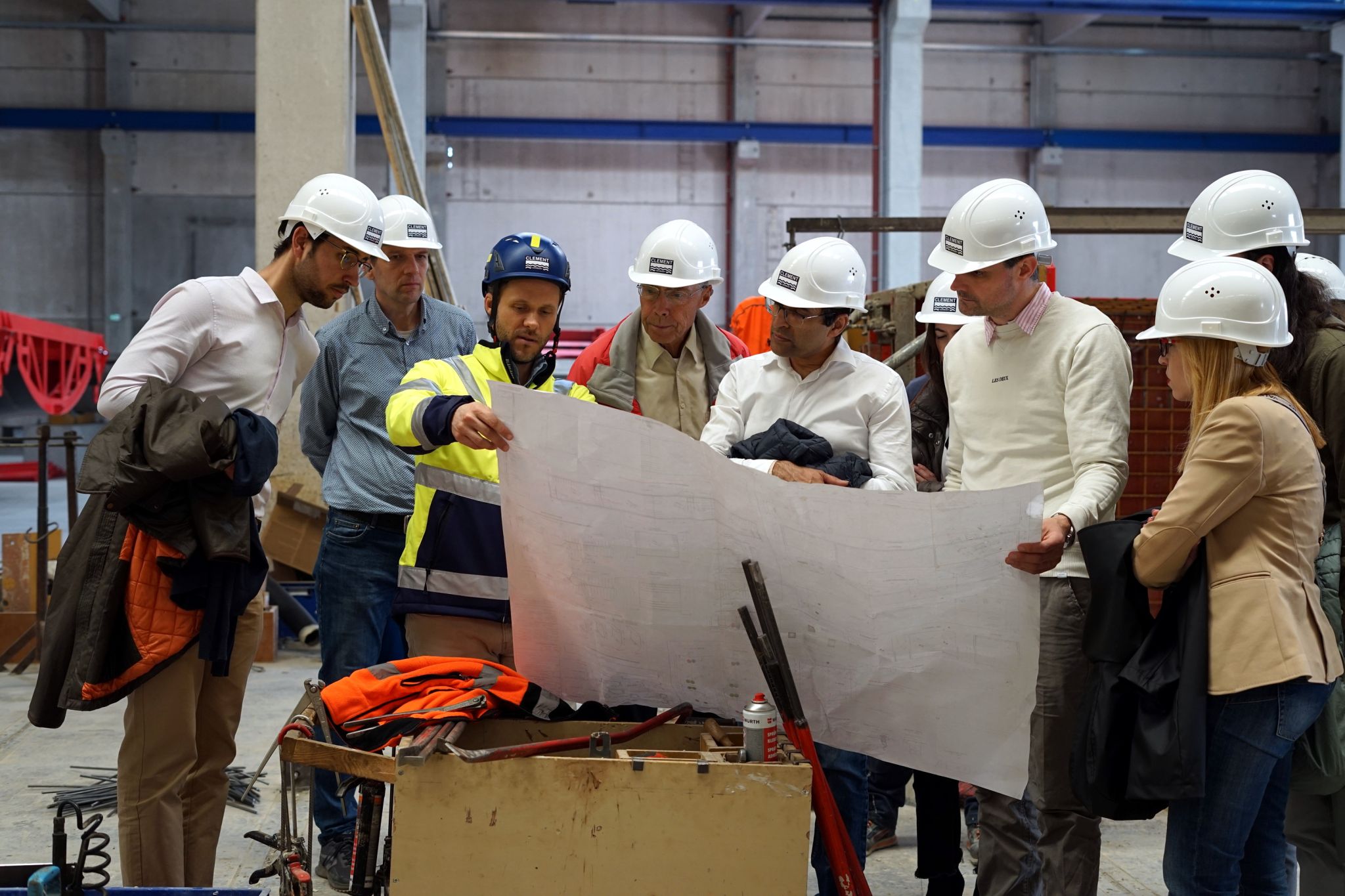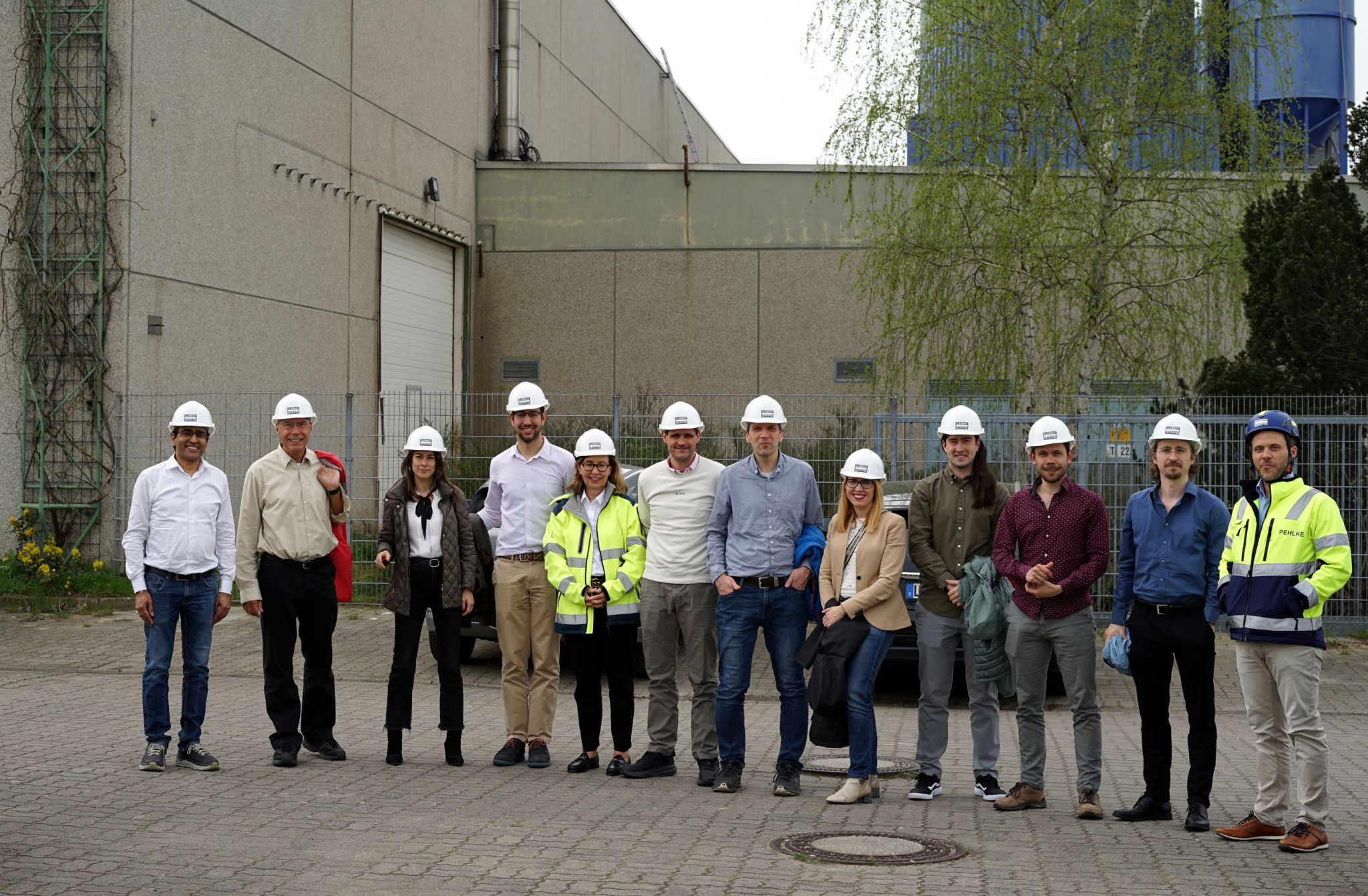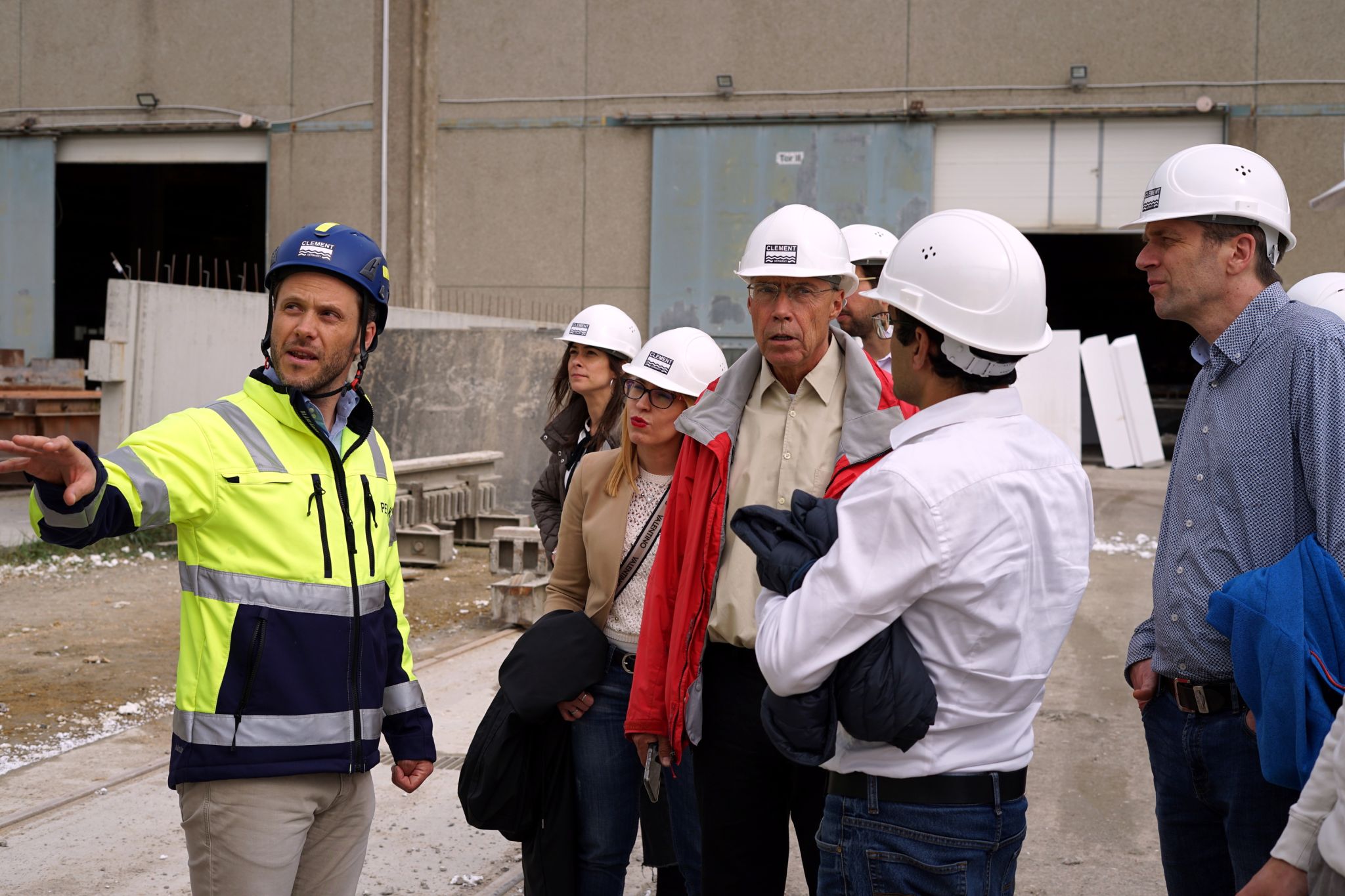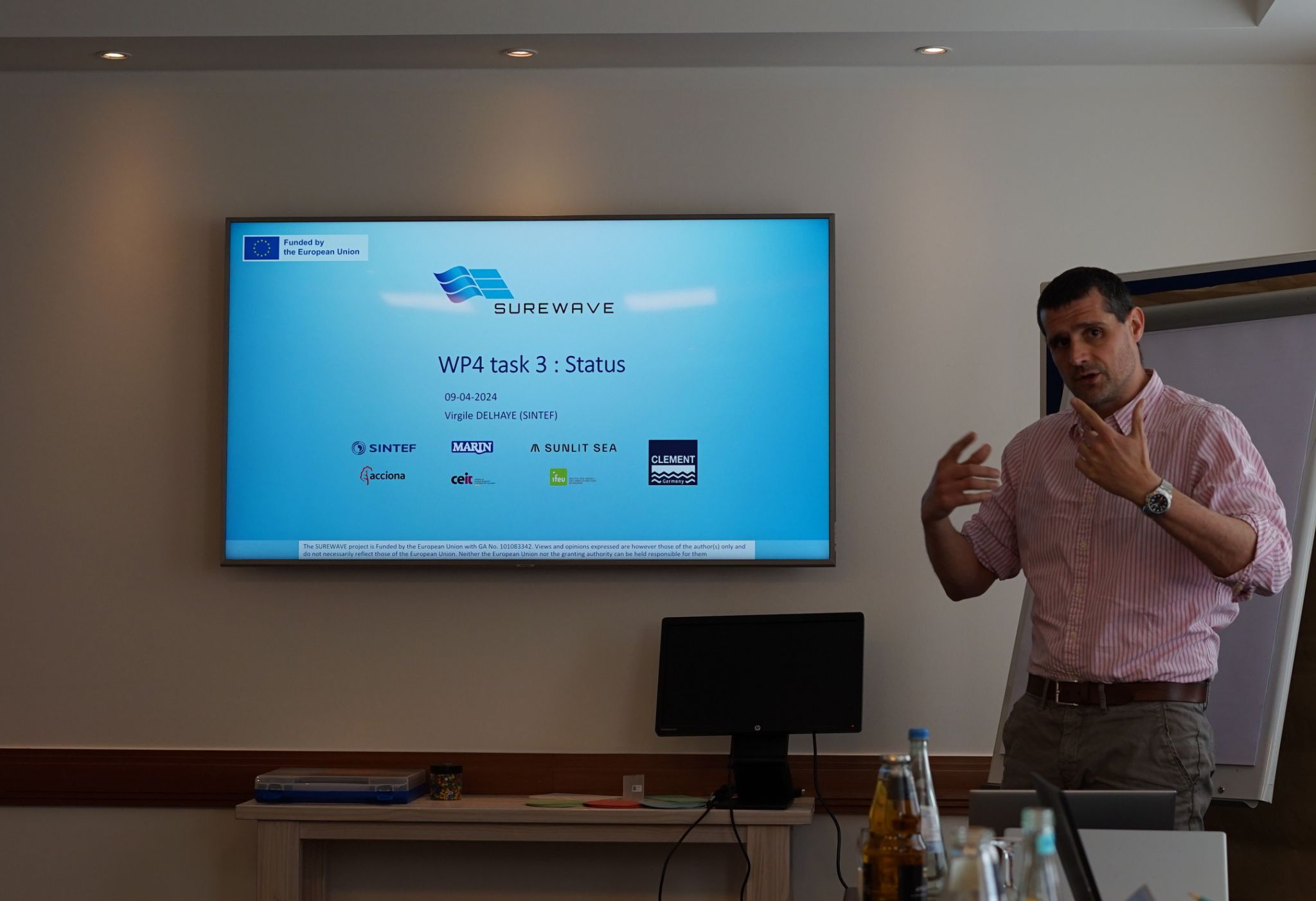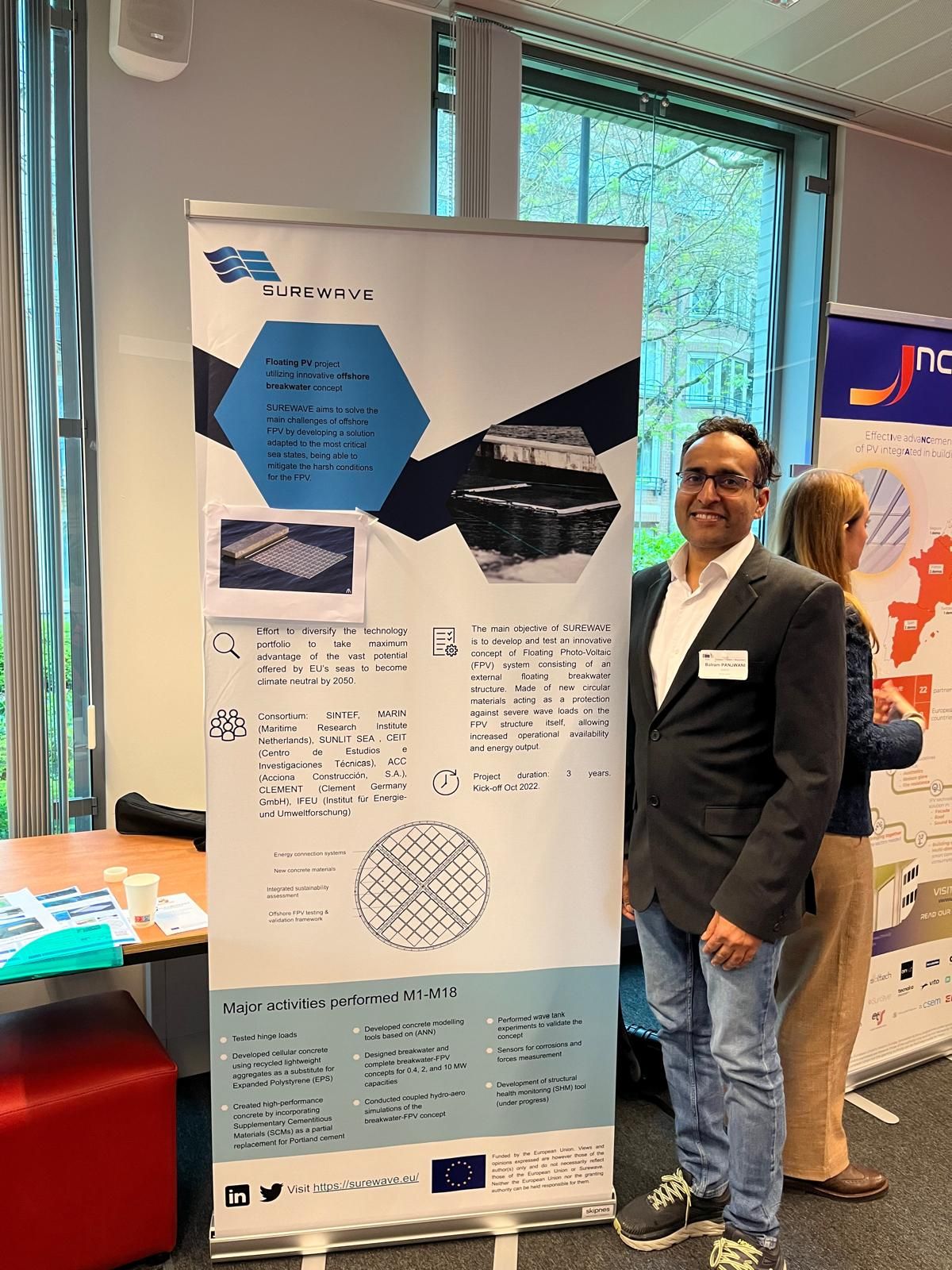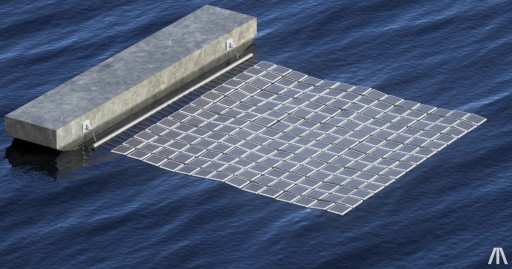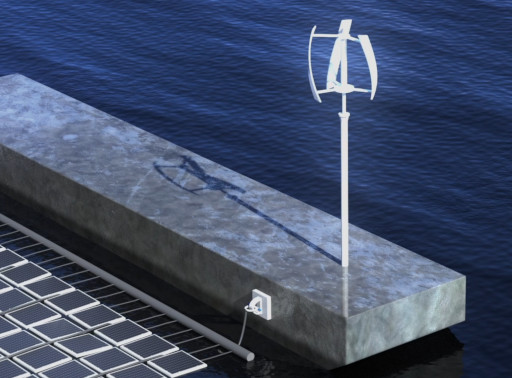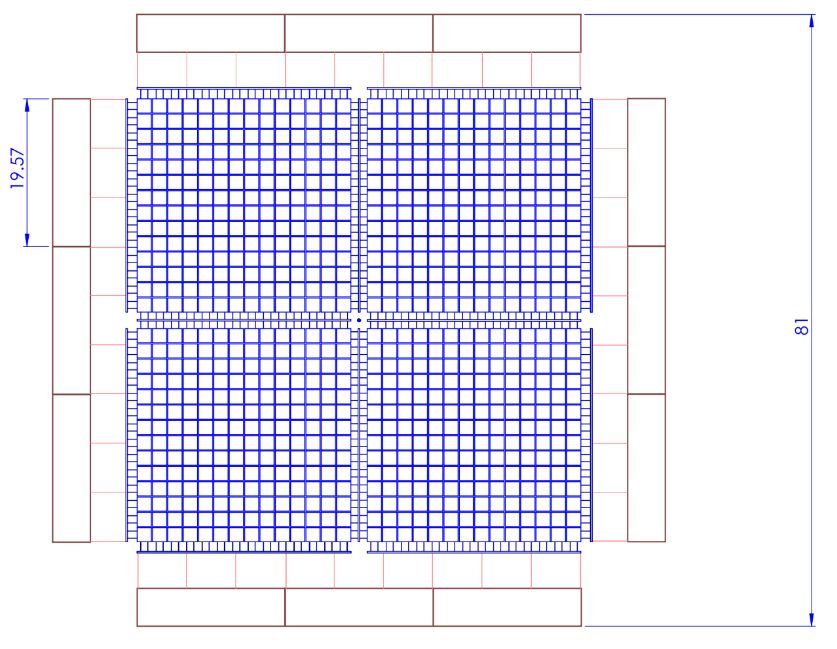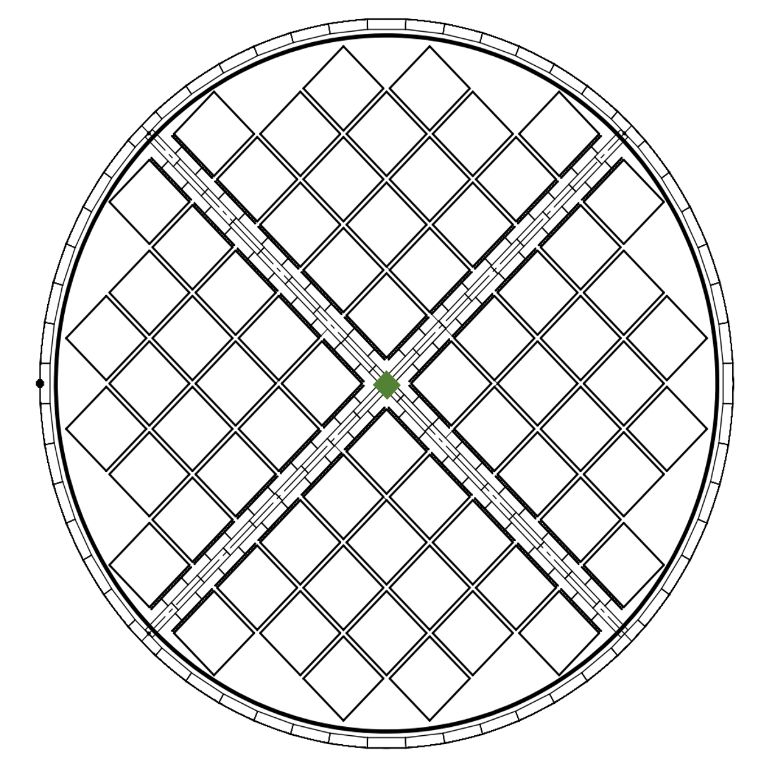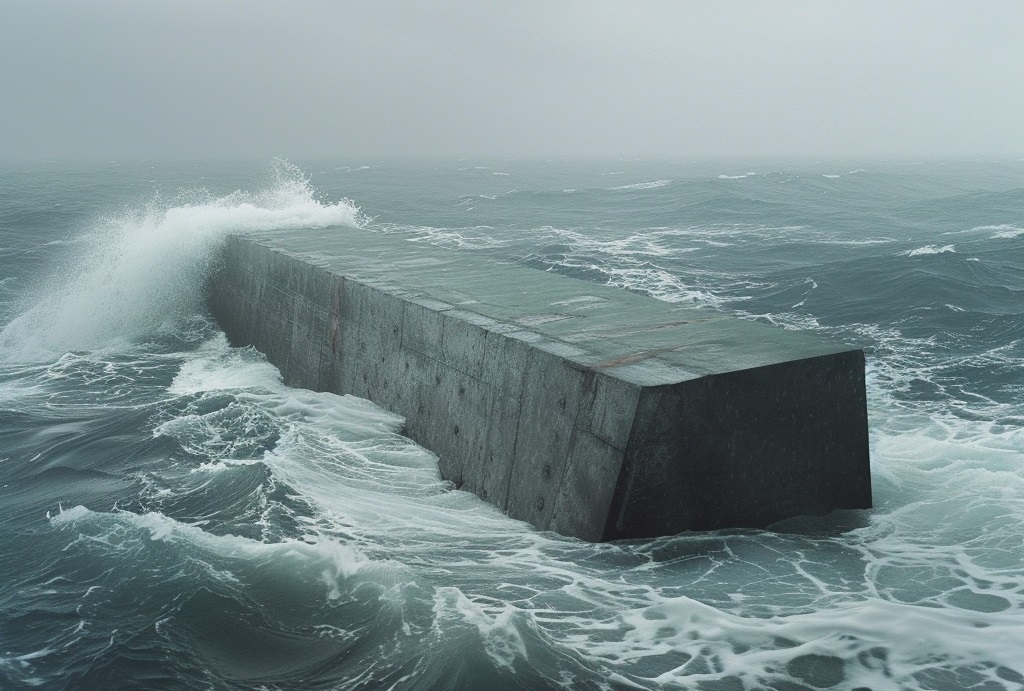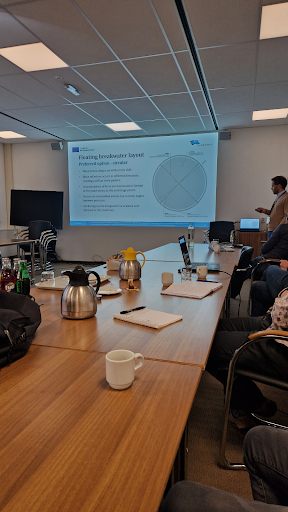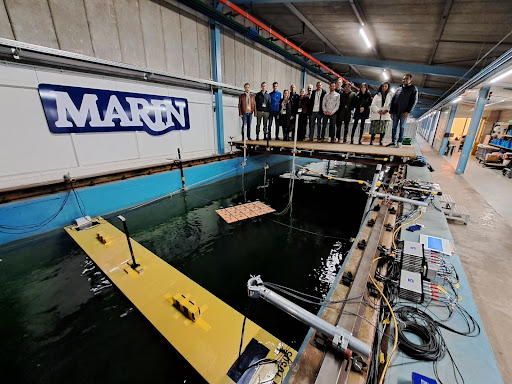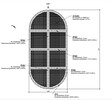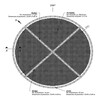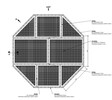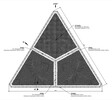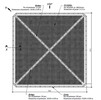Floating Photovoltaic (FPV) systems represent an innovative approach to renewable energy generation, especially in marine environments. However, these FPV infrastructures are continuously exposed to extreme wave loads throughout their operational life. Understanding the hydrodynamics of FPV systems is crucial for optimizing their design and ensuring long-term reliability. The SUREWAVE project leverages state-of-the-art tools to design these systems, but it's essential to validate these tools with experimental data to ensure accuracy.
As part of the European Union-funded SUREWAVE project, project partner MARIN (Maritime Research Institute Netherlands) conducted 1:10 scale wave basin tests to study the hydrodynamic behavior of FPV systems. The tests focused particularly on the performance of the flexible hinges that interconnect the photovoltaic panels, which are a critical component in ensuring the robustness of these systems.
Hydrodynamic Test Results
The tests, conducted in MARIN's advanced wave basin, utilized a 5 × 3 FPV matrix both with and without an external floating breakwater (FBW). These tests provided valuable insights into how FPV systems interact with wave forces in marine environments. The results offer a comprehensive look at the hydrodynamics of FPV systems, helping to inform more accurate and efficient designs.
This dataset, now publicly available, serves as an excellent resource for anyone working on FPV systems or marine technologies. Researchers, engineers, and developers can use this data to validate their hydrodynamic models and improve the accuracy of their simulations.
Access the Data and Publication
- The full dataset from MARIN's tests is available on Zenodo.
- A detailed description of the results has been published in a journal article, accessible here: Journal Publication.
Contributing to the European Commission's Renewable Energy Goals
The research conducted through the SUREWAVE project supports the European Commission's renewable energy targets, helping to advance sustainable energy solutions through better design and performance optimization of FPV systems. The data gathered from MARIN's experiments is instrumental in helping designers create more reliable and resilient FPV systems capable of withstanding the harsh conditions of marine environments.
Get Involved
We encourage the research and industrial community to utilize this dataset to further improve the hydrodynamic design of FPV systems. By contributing to model validation and enhancing simulation accuracy, you can play a part in advancing the future of renewable energy.
For more information, feel free to contact Joep van der Zanden from MARIN (Maritime Research Institute Netherlands).
